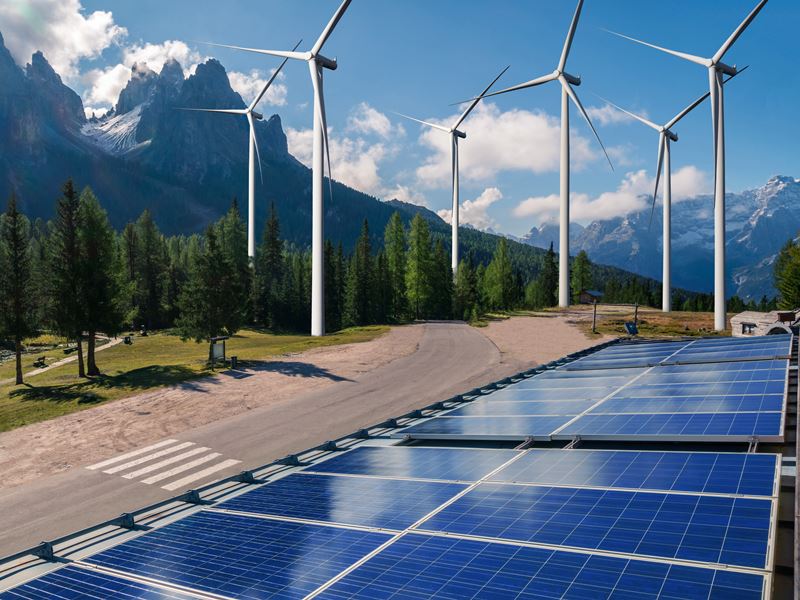The Immediate remedies for the energy crisis offer only a temporary relief. Hence, we advise Romanian businesses to adopt a forward-thinking approach: embracing the prosumer model. This concept merges the renewable energy production with consumption, paving the way for a long-term solution. This strategy aligns with the European Green Pact and circular economy directives, fostering a transition to renewables sources. In the era of climate change, embracing the prosumer model could unlock a more cost-effective and eco-friendly winter.
Faced with unforeseen events and significant energy market imbalances, short-term fixes have arisen primarily interventionist measures like caps, immediate financing, and government subsidies as observed previously. These measures aimed to offer temporary relief and immediate aid to affected parties. Yet, it's crucial to note that these interventions lack the capacity to offer an enduring and sustainable resolution to the issue.
In exploring lasting solutions, it's advisable to embrace a comprehensive strategy operating on a macroeconomic scale under government oversight, alongside individual company initiatives. Within the private sector, a promising avenue involves adopting self-sustained renewable energy production. This method, as witnessed in the widespread adoption by individuals, through initiatives like the “Casa Verde/ Green House” program, demonstrates potential for trimming energy-related expenses.
However, despite the broader uptake among individuals, legal entities, particularly small and medium-sized undertakings, have been slower to pivot toward this alternative. Embracing prosumer status—generating green energy for internal use and supplying excess to the grid—presents a growth opportunity for these entities. While it requires an initial investment, this transition significantly lowers long-term energy expenses.
This shift to renewable energy aligns with obligations outlined in the European Green Pact and EU circular economy practices. Considering that fossil fuels contribute to approximately three-quarters of greenhouse gas emissions, the imperative to switch to green alternatives like solar, wind, hydro, and geothermal sources becomes increasingly urgent.
The European Union's initiatives targeting the circular economy will be progressively integrated into National Strategies. The objective is to diminish the environmental footprint of production activities by embracing green technologies and processes, fostering digitization, and prioritizing renewable resources over reliance on fossil fuels.
What defines a prosumer?
The concept of a prosumer combines the notions of "producer" and "consumer," signifying that an individual or entity possesses a renewable energy generation facility, like solar panels or wind turbines, and channels the produced energy into the grid. To qualify as a prosumer, the primary function of an economic operator should not be the electricity generation.
Achieving prosumer status in 8 steps:
- Submitting the connection application.
- Receiving the technical endorsement for connection.
- Contract for the connection.
- Installation of the connection works.
- Receiving the connection certificate.
- Installing the electricity consumption measurement unit.
- Activating user equipment power.
- Concluding a contract with the electricity supplier.
Becoming a prosumer also implies notable hurdles. Primarily, the upfront expenses for the required infrastructure are substantial. Additionally, limited energy storage capacity exacerbates the challenge, worsened by inconsistent renewable energy generation. This inconsistency results in surplus energy being supplied to the grid and the need to purchase energy when production stagnates.
Nevertheless, upon deeper examination, we must acknowledge the increased expenses linked to producing green energy on the long run. These costs will likely be evident in the bills, particularly considering the aim to phase out fossil fuels by 2050 in alignment with the European target. Consequently, while the available energy on the market becomes sustainable, it may also come at a higher price.
Through self-generation, surplus energy produced during peak months can either be used to balance out usage or sold at the average price from the previous year's corresponding day. This approach presents companies with a chance to attain partial energy self-reliance, lessening reliance on traditional energy sources and mitigating vulnerability to interruptions and fluctuations. This strategic move not only offers a competitive edge in compliance with European circular economy standards but also positions these companies as promoters of sustainability. Considering these benefits, we firmly advocate for exploring this viable option.
Authors: Alina Iozsa and Robert Apitoaiei



